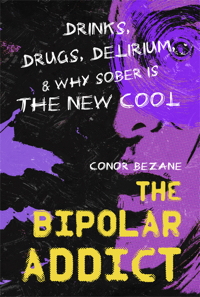Ketamine is now being used to treat bipolar depression in clinical trials. First developed for use as an animal tranquilizer, the anesthetic is also known by its street name, Special K.
A study at University of Hertfordshire in the UK concluded that ketamine has the potential to pull patients out of a deep depression.
“The prospect of using ketamine as an antidepressant is a fascinating one, particularly in terms of its potential for rapidly alleviating depressive symptoms in individuals who haven’t responded to more traditional treatments,” the study’s author, Dr. Keith Laws, professor of cognitive neuropsychology, says in his report. “While conventional antidepressants and psychotherapy may take weeks or months to produce any effect, ketamine infusions produce benefits within hours.”
Although ketamine first appeared in the 1970s – used in psychiatric research – it has been used recreationally since the ‘80s – particularly as a means of getting high and enhancing the experience of being at a rave or club. Heavy users report falling into the “K-Hole,” a slang term which describes the feeling of disorientation, detachment, and confusion experienced after high doses of the drug.
Visual and auditory hallucinations are common for those under the influence of ketamine. It can also produce feelings of detachment, according to the Center for Substance Abuse Research.
The drug can be injected in liquid form, although it is more commonly snorted as a powder, according to the National Institute on Drug Abuse. It is also used as a date-rape drug.
Ketamine produces anesthetic effects that can result in euphoria, slurred speech, and sometimes psychosis. While the dose given to patients is lower than a recreational dose, it can still produce these effects, according to Carlos Zarate, a researcher at the National Institute of Mental Health, who is a proponent of ketamine.
“We can take care of a migraine in hours,” Zarate told NPR. “So why do we have to wait weeks or months with depression?”
But even he admits the side effects are hazardous.
While ketamine is being administered, patients have reported hallucinations, out-of-body experiences and memory problems, Zarate says. Plus, he admits, people can get addicted to ketamine.
There are 5.7 million people in the U.S. who are bipolar, 60 percent of whom are addicts.
While giving ketamine to patients with major depressive disorder (i.e. unipolar depression) may be a fine solution, giving a ketamine infusion to a bipolar patient is dangerous, given our proclivity toward addiction.
Who’s to say that a bipolar patient won’t seek out the drug post-treatment as a means of self-medication?
Most rehabs won’t allow you to take benzodiazepines like Xanax, Klonopin or Valium while you are in treatment. These are fast-acting anti-anxiety drugs that are addictive and have the potential for abuse. Fast-acting just like ketamine.
“Because benzodiazepines are controlled substances with abuse potential, special attention must be directed toward the patient’s addiction history before these agents are prescribed,” a study by Dr. Lance P Longo and Dr. Brian Johnson says. “Long-term use of benzodiazepines may lead to overreliance on the need for the agent, loss of self-confidence and varying degrees of drug-seeking behavior”
Despite the quick-fix temptation doctors may have to treat their patients, administering ketamine to those of use with bipolar depression should be studied further.
The drug proved disastrous for Ethan, a bipolar addict featured in my forthcoming book, The Eccentrics. After taking ketamine, Ethan ended up at the San Francisco airport wearing nothing but a bathrobe, trying to fly to Buenos Aires with $20,000 in his pockets. Police didn’t arrest him; they took him to a psych ward.
Is ketamine a miracle drug? It’s definitely a fast-fix for unipolar depression, but for bipolar depression? Think again.
“More controlled longer-term follow-up studies are needed before ketamine can be regarded as a viable intervention for depression,” Dr. Laws continues. “But this research suggests it has exciting potential.”
Potential for disaster, in my opinion.








